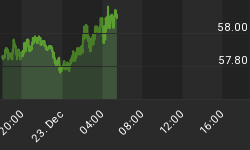The US deficit is huge and the fight over the fiscal cliff could intensify. Despite a brief rebound, the U.S. dollar index can fall to 78.00. Japan is in a recession, USDJPY technical and fundamental pictures point to a move toward 82.00.
U.S.: Seeking a Compromise
The re-election of President Obama will not change market trends, at least for the short-term. In fact, after a brief increase, the US dollar should remain under pressure, capped by the huge deficit and the political fight over the "fiscal cliff." The U.S. dollar index, which averages a basket of six currencies, could briefly rise to 81.50-82.00, before selling-off to 78.00-76.00 again. The end of December is the first deadline for the power struggle in Washington D.C., by then, fiscal negotiations should equip President Obama with a plan for the next four years. In reality, the risks of going over the so called "cliff" have risen lately: Republicans do not want higher taxes, while Democrats wish to pursue higher taxes for the wealthy; nonetheless, a sort of agreement between the parties is expected. If no agreement is reached, the debt ceiling deadline of February/March should oblige the two parties to find a compromise over the fiscal matters. Recessionary winds are blowing; financial markets should consolidate until a clear decision is made, but a non-decision in spring could result in massive stock selling.
Japan: What Will Happen Now?
It is now official: Japan is in a recession and a strong Japanese yen is not advisable. The slowing of global trade is undermining exports. Core machine orders, an indicator for capital spending, fell by 4.6% in September. orders were unchanged, but they fell by almost 16% in August. Bad relations with China, accentuated by the dispute over the Senkaku islands, have not helped exports either. The GDP could end up below 1.0% by the third quarter of the year. The Bank of Japan announced it would buy an additional Japanese yen 11 trillion inssets, and it will favor unlimited funding for a lending program. As a result, commercial banks' new practice of lending to the private sector will be supported by the BoJ. The results are uncertain; in Great Britain, as an example, the demand of credit by the private sector was strong when a similar approach was implemented. USDJPY finds a good technical supportt 79.00/78.00, and a rebound to 82.00 is a possibility over the coming months. The large head and shoulders formation, coupled with a divergence between price and the RSI indicators on the daily/weekly charts, should help USDJP.
A "Wait and See" Approach for ECB
ECB President Mario Draghixpects only minor improvements in 2013. So, interest rates should remain on hold for now, unless numbers severely deteriorate. These were the results of last week's meeting in Brussels. The financial crisis might be ending, but Europe is still in a recession: economic conditions have weakened in France and Germany, and in September, industrial production fell 2.7% in the former and 1.8% in the latter. The positive effects of Outright Monetary Transactions (OMT) in terms of consumer confidence have not materialized yet. The ECB confirmed funds are ready; nonetheless, a country needs to ask for assistance in order to receive help. When will Spain make the first move? Global financial markets are focusing on the idea that Madrid will soon ask for assistance. The yields of the Spanish bonds will again rise, if this perception changes. EURUSD could correct to 1.2650/1.2550; however, the longer-term prospective is bullish. The market can increase to 1.36-1.44 over the medium-term.
















